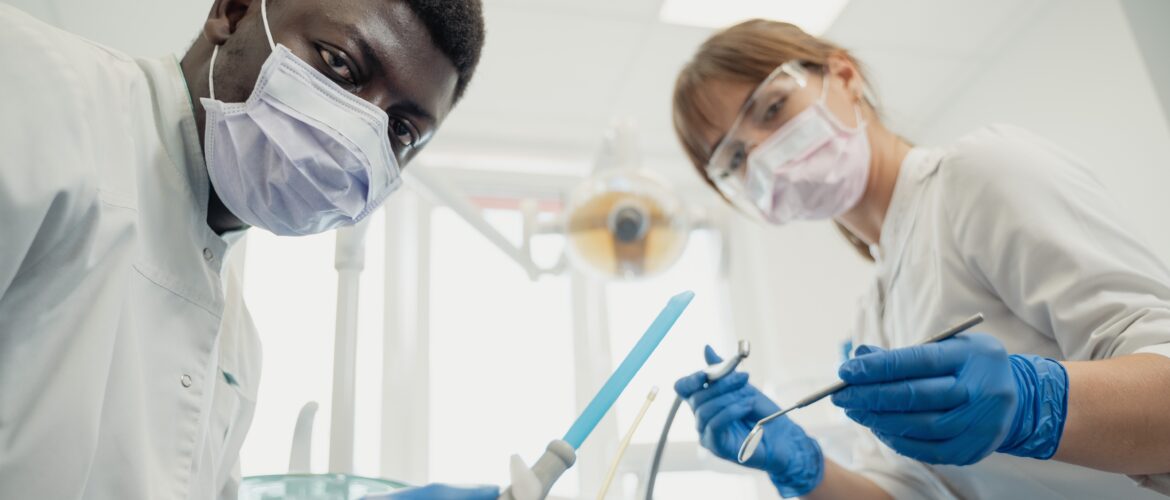Dental Hygiene and Safety: The Crucial Role of Personal Protective Equipment
Dental professionals play a vital role in ensuring their patients’ oral health. And yet, as most people know, it is currently extremely difficult to find an NHS dentist in the UK if you are not already registered with one. The Government has recently acknowledged this problem and, hopefully, steps will be quickly put in place to ensure everyone can access an NHS dentist when they need to.
The flip side of this is that many people really do not enjoy visiting dentists and often leave it until a problem with their teeth means a visit is essential. This is unfortunate as investing in dental care really does pay dividends in the long term.
Yet for those who are already nervous about visiting a dentist, entering the surgery and seeing dentist professionals all looking as if they are about to carry out a major surgical operation can make the experience even more daunting! Yet maintaining a safe and hygienic environment in dental practices is crucial for the well-being of patients and the dental professionals themselves.
This article will discuss the importance of personal protective equipment in dental practices including dental surgical gloves, in maintaining a safe dental practice and promoting optimal oral care so that next time you visit your dentist, you’ll find the precautions dentists take reassuring rather than threatening.
The Importance of Personal Protective Equipment in Dental Practices
Personal Protective Equipment (PPE) is essential in dental settings to minimise the risk of infection and cross-contamination between patients and dental professionals. Some of the most commonly used PPE in dental practices include:
- Dental surgical gloves: Dental professionals wear these gloves to protect their hands from contamination and minimise the risk of transmitting infections between patients. Dental surgical gloves are typically made from latex, nitrile, or vinyl materials and should be changed between patients to prevent cross-contamination.
- Masks: Dental professionals wear masks to protect their noses and mouth from exposure to airborne particles and fluids, reducing the risk of inhaling potentially harmful microorganisms.
- Protective eyewear: Goggles or face shields protect the eyes from splashes, sprays, and aerosols generated during dental procedures.
- Protective clothing: Dental professionals wear gowns or lab coats to protect their clothing and skin from contamination during dental procedures.
Best Practices for Dental PPE Use
To ensure the effectiveness of PPE in promoting dental hygiene and safety, dental professionals should adhere to the following best practices:
- Choose the right PPE: Dental professionals should select PPE that is appropriate for the specific procedure being performed. For example, dental surgical gloves should be used for invasive procedures, while regular examination gloves may be sufficient for non-invasive treatments.
- Follow proper donning and doffing procedures: Dental professionals must be trained to put on (donning) and remove (doffing) PPE to avoid cross-contamination.
- Dispose of PPE appropriately: Used PPE should be disposed of in designated waste containers to prevent contamination of the dental environment.
- Regular hand hygiene: Dental professionals should practice good hand hygiene before and after using PPE, including washing hands with soap and water or using alcohol-based hand sanitiser.
- Stay up-to-date with guidelines: Dental professionals should stay informed about the latest PPE guidelines and recommendations from regulatory bodies and professional organisations, such as the General Dental Council and the British Dental Association.
Conclusion
Personal protective equipment, including dental surgical gloves, is critical in maintaining a safe and hygienic environment in dental practices. By adhering to best practices for PPE use and staying informed about the latest guidelines, dental professionals can provide exceptional oral care while minimising the risk of infection and cross-contamination.
Ultimately, prioritising dental hygiene and safety protects the well-being of patients and dental professionals and contributes to a healthier, happier community.
We hope you have found the information in this article reassuring. Now you have a better understanding of the importance of personal protective equipment in dental practices, we are sure you will feel a lot more comfortable when visiting your dentist.

